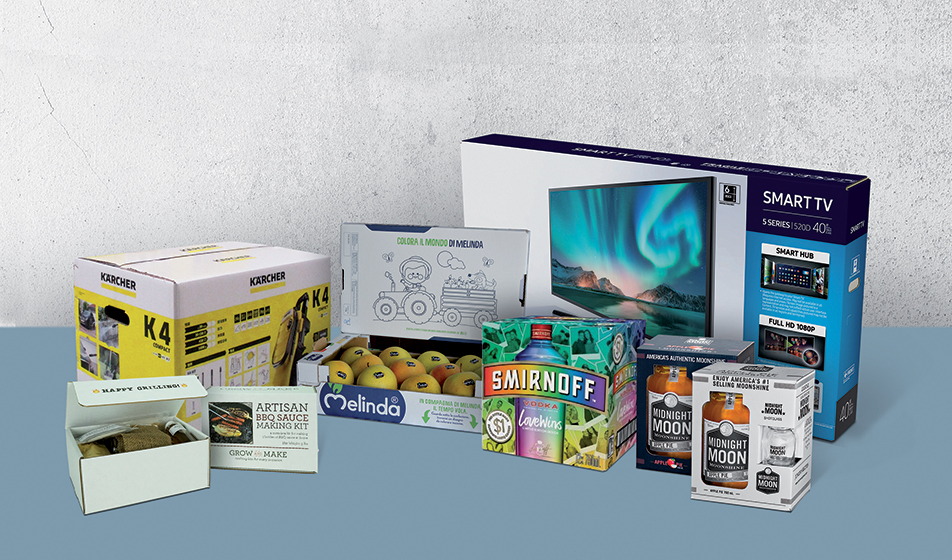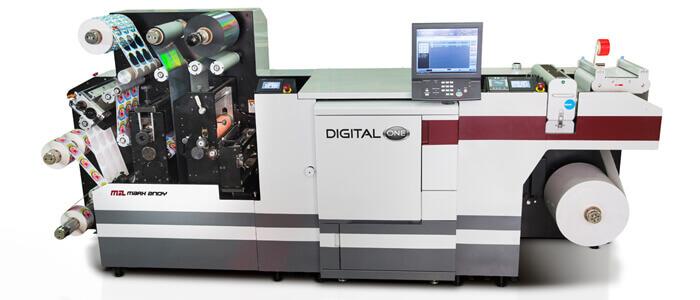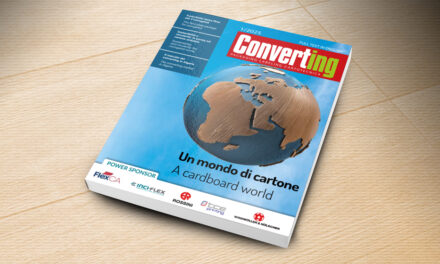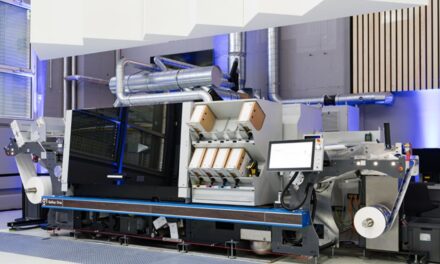
Adi Shorer, Product and Strategy Manager, HP PageWide Industrial
Post-Print Inkjet Packaging Products & Solution, HP PageWide Industrial
In the competitive landscape of retail packaging and displays, corrugated materials play a pivotal role. From safeguarding goods during transit to amplifying brand visibility on crowded store shelves, corrugated packaging has become the backbone of modern product distribution. While this market continues to grow, dynamics are complex: supply chain shifts, sustainability mandates, labor constraints, and changing demand patterns.
To capitalize on the immense potential of high-graphics corrugated packaging and displays while deftly navigating the sector’s multifaceted challenges, industry leaders must stay ahead of several interrelated trends reshaping the landscape.
Supply Chain Realignment
The pandemic-induced disruptions have underscored the fragility of global supply networks and the paramount importance of resilient, adaptable supply chains. Manufacturers and suppliers across sectors are proactively reevaluating and optimizing their sourcing strategies – diversifying suppliers, reshoring production, and restructuring logistics channels. In the corrugated packaging realm, this paradigm shift translates into a heightened emphasis on localized production, reducing lead times, and ensuring seamless, uninterrupted supply to meet fluctuating demand. The rise of digital printing technology has emerged as a catalyst in this supply chain evolution, enabling corrugated converters to rapidly pivot production to address emerging needs. With digital printing, the lengthy pre-press processes and make-readies associated with traditional analog methods are eliminated, compressing timelines from weeks and in extreme cases months, to days.
As companies realign their supply chains for greater agility, savvy corrugated packaging providers are strategically positioning themselves to meet demand efficiently, with many harnessing the flexibility of digital print capabilities.
Sustainability Pressures Intensify
Sustainability nowadays is an existential mandate. Consumers and regulatory bodies alike are exerting intensifying pressures, demanding eco-conscious solutions across all industries. The corrugated packaging sector, by virtue of its inherently recyclable and biodegradable nature, is well-positioned to align with these escalating sustainability goals and requirements. Yet, traditional printing methods have room for improvement concerning the water and chemicals involved in plate production, the waste during make-ready and set-up, and the water consumption and treatment once the print job is completed.
Brands are actively seeking packaging materials that minimize environmental impact across the entire product lifecycle. Expect to witness a groundswell of innovations oriented toward lightweighting designs, reducing material usage, and transitioning to renewable, water-based inks and coatings. Leading press manufacturers are intensifying their focus on developing digital engines specifically engineered for high-performance water-based inks to serve this growing market need.
Labor Challenges Drive Automation and Productivity Focus
Persistent labor shortages continue to disrupt operations across the manufacturing sphere, and the packaging sector is no exception. To circumvent this systemic bottleneck and boost output, the adoption of automation is rapidly gaining decisive traction. Thoroughly modernizing production lines, corrugated box manufacturers are investing heavily in cutting-edge machinery, both to enhance efficiency and reduce reliance on scarce manual labor pools.
From high-speed robotic converting systems to smart conveyor logistics and AI-driven quality control solutions, state-of-the-art automation is boosting productivity while ensuring consistent quality. The high-graphics segment, which mandates stringent precision and intricate detailing, stands to particularly benefit from these automated processes. Digital printing systems themselves are core enablers of automation – with no plates or tools to manually load, computer-integrated manufacturing becomes a seamless reality.
Managing Input Costs Volatility Through Digital Printing
Fluctuations in raw material pricing pose an ongoing challenge to profitability across the corrugated value chain. As a material-intensive product, corrugated packaging is heavily impacted by volatility in paperboard feedstock costs – a commodity plagued by variable global supply and demand dynamics.
To navigate this challenging landscape, converters are exploring alternative low-cost material substrates, zealously optimizing designs for utmost material efficiency, negotiating long-term supply contracts to hedge against peaks, and critically, leveraging the cost benefits of digital printing technologies.
The high-graphics submarket, with its emphasis on eye-catching visuals, must navigate a delicate balance between aesthetic vibrancy and material costs.
Unlike conventional analog print which relies on overruns to accommodate make-readies, digital is essentially a zero-setup process with minimal substrate waste. Print runs can be produced on-demand at the exact required quantity. Furthermore, with variable data printing, the same master design can be customized for numerous SKUs, with no additional investment in tooling.
The New Driving Force: Digital Print Technology
Amid this tapestry of interrelated trends, digital printing technology is rapidly emerging as a powerful catalyst for innovation and optimization across the corrugated packaging and high-graphics display spheres.
With zero make-readies, digital printing slashes time-to-market. Brands can prototype new packaging designs or produce economical short/medium runs for test markets, limited editions, and seasonal promotions without bearing the excessive costs of conventional print methods. In addition, digital printing allows converters to rapidly adapt to changing needs. Packaging can be produced on-demand to sync with real-time sales data and inventory levels. For high-graphics displays, faster turnarounds enable responsive marketing campaigns.
As brands across categories seek differentiation amidst ever-increasing clutter, digital print technology stands poised to reshape how the industry approaches packaging and merchandising displays. By uniting brilliant high-quality graphics with production efficiencies and supply chain responsiveness, digital is driving corrugated evolution into a catalyst for creating immersive, impactful brand experiences.


















